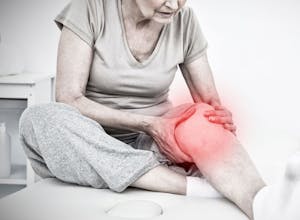
Pain is a natural response to dysfunction or injury. It can be a "warning" that something is wrong - that some corrective action needs to be taken.
Acute Pain
Most pain is limited to a relatively brief period of time, diminishing and resolving as the tissues heal. This short-term form of pain is known as acute pain. Acute pain can result from sudden illness or injury, or following surgery. The pain can be mild with minimal disruption of activities - to severe, producing significant to total disruption of activities or lifestyle. This time limited pain usually responds well to a variety of treatments. Occasionally, complications develop, or the condition changes such that acute pain becomes chronic pain.
Chronic Pain
Chronic pain can be characterized either by intermittent, recurring episodes of pain, or by constant unrelenting pain. The pain will last for lengthy periods of time, and is usually moderate to severe, often quite debilitating. Some of these chronic pain conditions include (or are the result of):
- Burns
- Previous trauma/injury
- Fibromyalgia
- Diabetes
- Arthritis
- Migraine headaches
- Neck/back pain
- Shingles
- Sciatica
- Cancer
- Amputation
- Neuropathy
More resistant to treatment, chronic pain conditions may require a multidisciplinary approach for management. Patients may seek help from various medical practitioners, and may use combinations of medications, procedures, alternative therapies, and surgery. As part of a comprehensive treatment program, physicians often refer patients for Physical or Occupational Therapy.
Pain Management Therapy Programs
Whether for acute pain or chronic pain, the goal of pain management is to provide symptom relief and improve the patient's ability to function in daily activities. The physical rehabilitation aspect of pain management focuses on breaking the pain cycle. This is accomplished by using multiple techniques integrated into a comprehensive therapy program. Therapy programs are custom designed for each patient, based on the therapist's diagnoses and evaluation results. The therapy programs may include techniques such as aquatic therapy, pain management modalities, therapeutic exercises and/or activities, and patient education.
These techniques are described in greater detail below and throughout the Services section of our website.
Therapeutic exercise is frequently prescribed by physicians as part of the rehab treatment plan for patients with pain. It has been found that chronic pain is often associated with tense or weak muscle tissue. Light to moderate exercise (such as swimming or walking) can often help break the pain cycle. Exercise improves blood flow to the active muscles, which in turn delivers necessary oxygen and nutrients to the tissues. This helps improve tissue health, strength, healing capabilities, and pain reduction. Clinical studies have confirmed the decrease in pain associated with therapeutic exercise as long as the patient follows the prescribed exercise plan. Specific therapeutic exercise plans are developed by the therapist based on treatment goals.
Modalities are specialized therapeutic techniques, agents or devices often integrated into the comprehensive treatment program. They are described in greater detail on the Pain Management Modalities page.
Other basic measures that might be recommended for pain relief
Stress reduction - stress is also known to be associated with increased pain. Any measures a patient can take to reduce stress may help contribute to pain reduction. Some of these measures may include getting adequate sleep, and taking relaxation, meditation, or biofeedback breaks.
R.I.C.E. - Rest, Ice, Compression, and Elevation - these time honored, traditional measures are often recommended for home care of minor injuries of muscles or joints (such as bruising, strains or sprains). Adding over the counter pain relievers may also be necessary for a brief time following injury. More serious injuries require professional care as provided by physicians, surgeons, and physical rehabilitation therapists.
